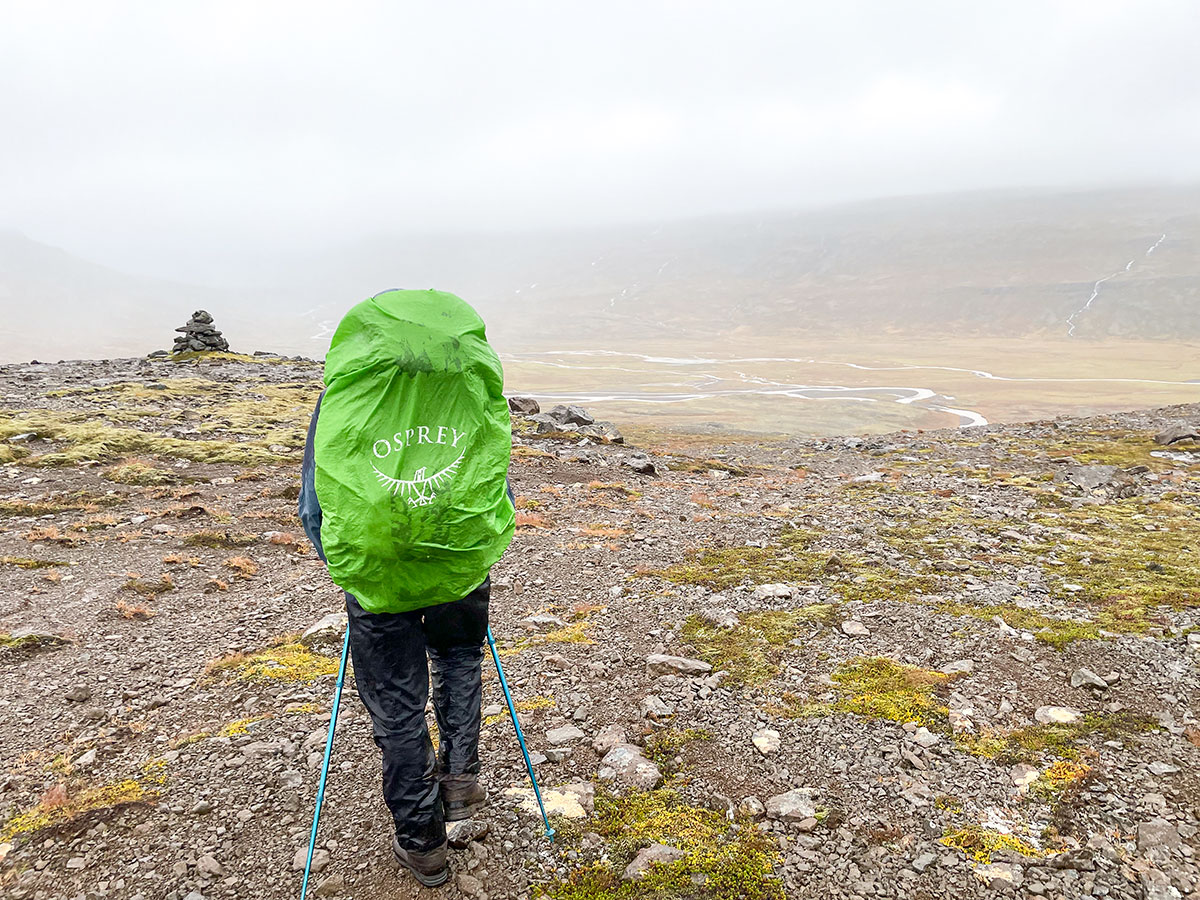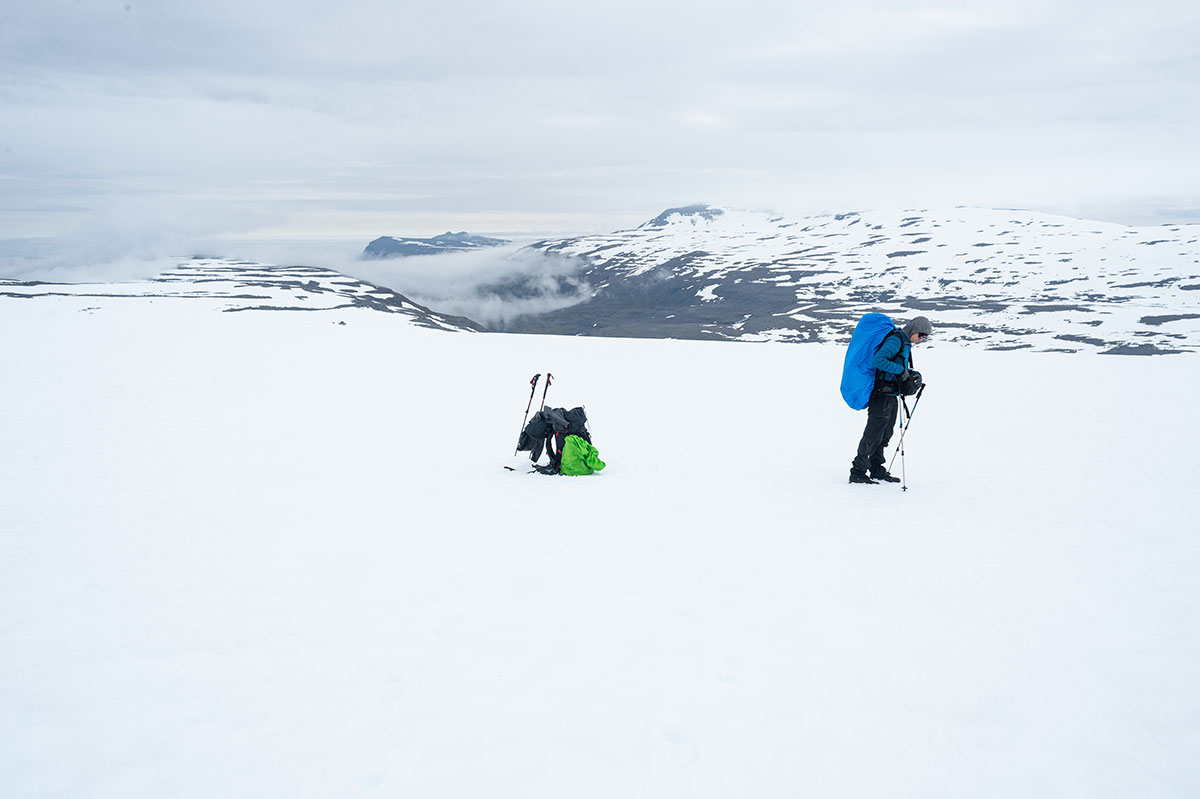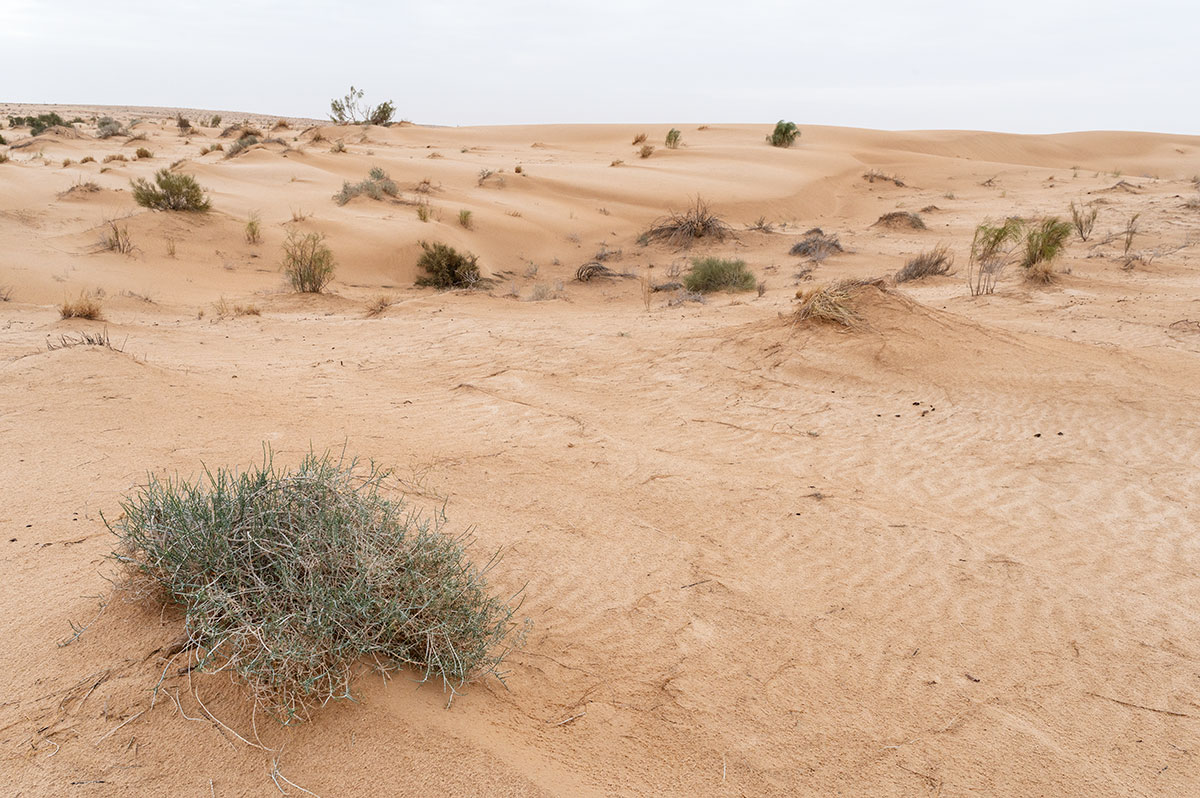Training for a trek : How to prepare for a long hike?
Trekking is not just a leisure activity, it’s a real endurance sport. It can be a very physical and technical activity.
Are you planning to backpack for several days, totally or partially on your own for the first time? IIn this article, we’ll give you some advice on training for a trek and prepare for intense, repeated physical activity.
What is trekking?
Trekking is a hike lasting several days/weeks, over rather difficult and isolated terrain. We often talk about trekking and self-sufficiency interchangeably, but it is perfectly possible to trek while staying in refuges, hostels or with local people.
Trekking often involves carrying a heavy backpack (between 10kg and 25kg), which makes the activity very physical and demanding. But the possibility of adapting a trek or doing an adventure trek in a group (and benefiting from agency logistics) makes it accessible to a larger number of people. In this article, we’ll look at how to train for a trek.
A trek in the cold regions
Before going on a trek in a cold, or even very cold region, you need to know what you’re getting yourself into. Firstly, you need to find out about the region in question, the minimum and maximum temperatures for each season, the strength of the winds (which can TOTALLY change the way you feel!), and so on.
For example, I’ve done treks in Sweden and Norway, and others in Iceland. The climates in these countries may seem similar. However, the strength of the winds in Iceland changes the situation completely and makes the country dangerous if you don’t know how to deal with this type of climate.
The main characteristic of a trek in a cold region is the high energy expenditure involved. Even in a static position, your body will expend a lot of energy to keep warm. This means, for example, that you need to bring more food with you. In my article on Hornstrandir reserve in Iceland, you’ll find a list of the foods I use when trekking in a very cold region.
Equipment is also of vital importance for this type of trek in a hostile land. Clothing, accessories and bivouac equipment all need to be adapted to the cold and to any heavy rainfall. If you’re not sure, don’t hesitate to write to us and we’ll give you some advice. The most important thing is not to embark on such a project without having fully studied the question.
Un trek dans les régions chaudes
If trekking in a cold region can be dangerous for a beginner, it is no less so for a trek in a hot region. The main risk in this case is dehydration. I’ve done quite a few treks in the Sahara, and the feedback I can give you is that above 30 degrees, you’ll need to drink at least 4 litres of water a day and take a lot of precautions.
In addition to good hydration management, you need to cover your body and protect it from the sun’s rays, both to conserve water and to avoid burns and heatstroke. Contrary to popular belief, dark colours will protect you from the heat better than white or beige. Desert dwellers only wear dark colours (mainly black and electric blue), which absorb up to 90% of the sun’s rays.
If you’re trekking in a hot region, be aware that adaptations are possible. For example, avoid walking during the hottest hours. Instead, walk in the morning and at the end of the day. Some people even walk at night. In short, everything is possible, it’s up to you to find what suits you best. The hottest hours are ideal for a nap, to allow the body to cool down a little.
Finally, as with cold regions, you need to adapt your equipment to your environment. If you’re going to walk in the desert, you’ll need light shoes, the exact opposite of mountain boots. Ideally, your shoes should not accumulate sand (to avoid chafing and blisters). They can be high and tight around the ankles.
The same goes for the rest of your equipment, the two main questions being how best to wick away perspiration and how to protect yourself from the sun.
Finally, a trek in a hot region requires precautions. If you’re not used to it or you’re not sure of yourself, get help. It’s safer to go with two or more people, especially if one member of the team is more experienced.
How long should you train for a trek?
This is a tricky question, as every body is different. I’d say that, as a general rule, starting to train two months before a trek is a good time, especially if the trek is difficult. But some people will need more time, others less.
It also depends on how much time you have to devote to training. If you can only prepare for the trek at weekends, then you’ll need more time.
On the other hand, if you’re prone to injury, I’d advise you to start earlier. The aim is to get your body used to it gradually rather than suddenly. If, however, you never injure yourself and you already have good cardio, then a month will be enough.
Training for a trek: our 10 tips
1- Training for a trek in conditions close to the real thing
It is important to train for your future trek in conditions close to those you will encounter. The idea is to get your body used to these conditions on the one hand, and to experience similar difficulties on the other.
For example, before hiking in a marshy area, it’s important to train your body for this type of difficult walk. Similarly, getting your body used to mountain conditions and steep gradients will help you avoid unpleasant surprises on the big day.
2- Carrying the right weight
The body adapts quickly, very quickly. But to allow it to adapt, you need to be able to simulate the right level of difficulty. Weight is one of the most important factors, as it allows you to vary the level of difficulty of your training and adapt your body more effectively.
The idea is simple: it’s better to carry more weight and get your body used to it than to carry too little and have difficulty on the first few days of the trek. However, be careful not to exceed your body’s tolerance threshold. The idea is not to injure yourself either.
In trekking circles, we regularly hear the 20kg over 20km rule. If you’re capable of carrying that weight over that distance, and repeating the effort over several days, then you’ll be fit for a trek in the great outdoors!
If you’re not used to carrying such heavy loads, you can start with a lighter backpack and gradually increase the weight. Once your body is used to the 20kg, you can start to vary the terrain (mountains, scree…).
If you live in the city, you can practise walking up and down stairs with your backpack. This exercise is very similar to the effort involved in climbing a mountain.
3- Training for a trek also means working on your endurance
To build endurance and train for a trek in realistic conditions, there’s no mystery about it: you need to multiply your effort! In other words, when you push your body out of its comfort zone, it will start to build muscle in the areas of the body required by the effort. But if you stop training, these muscles will start to melt away. So you need to repeat your training regularly to force your body to maintain its condition and get used to repeated efforts, which is what you will experience during your long hikes.
4- Eat well
It’s no secret that a lot of physical activity goes hand in hand with a good diet. In this area I would simply advise you to eat as balanced a diet as possible, but above all fibre and protein.
On training days, just increase the amount of protein you eat. For example, it’s a good idea to plan a variety of dishes with different sources of protein.
If you don’t eat meat and/or dairy products, don’t panic, I don’t either, and that doesn’t stop me from doing up to 6 12-day treks a year. Pulses like chickpeas or kidney beans combined with a cereal (like couscous) do the job very well. If you’re a fan of hummus, then a few slices as an aperitif will easily increase your protein intake (and iron and zinc at the same time!).
Finally, peanuts are the champions of vegetable protein. Eat them plain or cooked!
5- Finding and buying the right trekking equipment
The success of a trek depends largely on the choice of equipment. There’s nothing worse than a long trek with unsuitable equipment. What is supposed to be a moment of pleasure can turn into a nightmare.
Equipment must be adapted to the weather, the terrain and the people. For example, if you’re hiking in a rainy region, you’ll need waterproof clothing. Similarly, you don’t wear the same type of footwear on all types of terrain, and you don’t use the same walking poles everywhere. You can find out more about this in my article “Basic trekking essentials?
If you’re not sure what equipment is right for you or the terrain, the best thing to do is go to a specialist shop with a list of questions. They’ll be able to advise you and help you avoid unpleasant surprises.
6- Training for a trek with your own equipment
Once you have chosen your trekking equipment, it is essential to get used to it. You don’t read the manual for pitching a tent in the pouring rain on the first day of a trek. It’s better to practise using the equipment beforehand.
I’d therefore advise you to use your definitive equipment during your trekking training sessions. Learn how to put up and take down your tent, get used to walking with trekking poles, make your own footwear, and so on. That way, if any of your equipment is unsuitable, you’ll be able to correct it during the training phase.
7- Learn to adopt a minimalist lifestyle
Let’s face it, life on an autonomous trek is anything but comfortable. The food is basic, the sleeping arrangements uncomfortable and hygiene leaves much to be desired. To enjoy this kind of trekking, you have to learn to get past these comforts. The aim is not to have gourmet meals or sleep in a king’s or queen’s bed, but to be out in nature and recharge your batteries.
To enjoy an autonomous trek, you have to learn to focus on the essentials, accept and adopt a minimalist lifestyle – that’s the price you have to pay for incredible adventures!
You’ll have plenty of time to eat well and sleep in a comfortable bed when you get home.
Learning to adopt a minimalist lifestyle and to make do with little plays an important psychological role. During a difficult trek, what happens in the head plays a more important role than what happens in the rest of the body. Injuries aside, the causes of abandonment are often psychological rather than physical. And this aspect of trekking can be learned.
8- Getting your body used to the cold or the heat
Depending on the region where you are going to be hiking, it may be a good idea to get your body used to similar temperature conditions. The aim is twofold:
- To understand how your body reacts and functions in cold or hot conditions, so that you can adapt to them and adapt your diet and equipment.
- To allow the body to be in front of something it is already familiar with when trekking.
Even if you don’t live in a climate similar to the one you’ll be trekking in, you can cheat. For example, you can hike in light clothing in winter to simulate the cold, or on the contrary, wear too much clothing to be warm and sweaty.
9- Training for a trek: cardio training
This is the part of training that everyone hates! Cardio training means jogging, cycling, rowing – in short, anything that raises your heart rate. The reason for this training is obvious: when you have to climb mountains during your trek, the better your cardio, the easier the climb will be.
You shouldn’t neglect this part of your training. During the trek, poor cardio will have an impact on your whole body. The risk of injury increases, perspiration makes the trek uncomfortable and morale plummets.
10- Find out about the terrain and the region
If you’re planning a trek, more than ever you need to know where you’re going. Take the time to find out about the terrain, the difficulties, the constraints and so on. You can browse discussion forums such as TrailGroove or UKH to find information, advice and even trekking partners.
Sites specialising in trekking routes and hikes, such as Wikilock, will also be useful. Don’t hesitate to take a look at the routes available in your area, where you can even find photos to give you an idea of the terrain.
If you’re completely unfamiliar with the area where you’re planning to hike, don’t hesitate to write to the local tourist office – they’ll be happy to provide you with documentation.
How do you recover after a trek?
Recovery is at least as important as preparation. After a trek, especially if it has been physically demanding, you need to allow your body to regenerate and heal any injuries. To do this, I recommend the following:
- Eat a balanced diet rich in fibre.
- Allow the intestinal flora to regenerate (the hiker’s diet damages it) by eating products that are ideally unprocessed (legumes, a variety of cereals, garlic and onions, etc.) and avoiding sugars and saturated fatty acids.
- Keeping your body well hydrated, by drinking plenty of water, helps to recover water lost during the trek and flush out waste products.
- Resume a normal sleep rhythm (everyone has a different rhythm, so it’s up to you to know your own).
- Continue to stretch daily (you’ll see, you’ll feel fresh and good in your body!).
- Get a massage to improve circulation and relieve muscle tension.
- Avoid drinking alcohol in the days following the trek to avoid dehydrating your body.
Conclusion
Training for a trek is a routine that needs to be adopted. Ideally, you should keep your body active all year round so that you’re always ready for a trip to the mountains. This training prepares your body and mind and considerably reduces the risk of injury. You’ll enjoy your hikes a lot more if you’re prepared!




